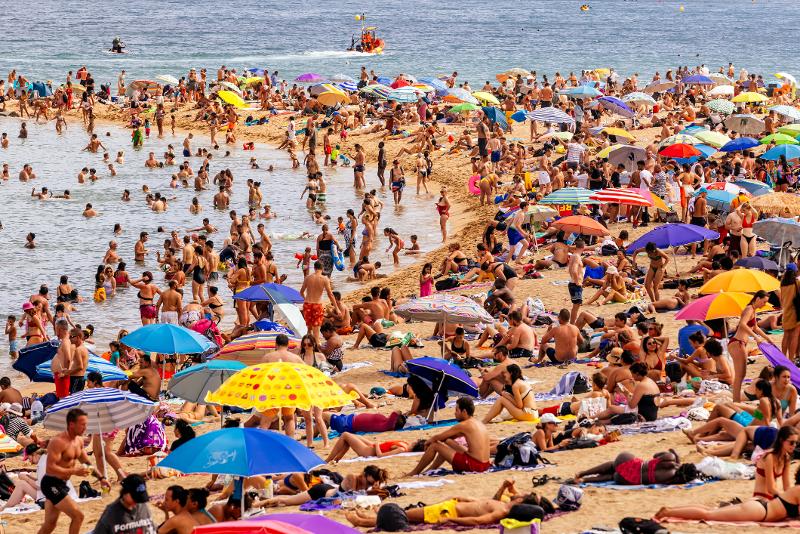In recent years, climate change has posed significant challenges to the travel industry, reshaping popular destinations and altering peak travel seasons. As a passionate traveler, I am compelled to explore how our changing climate is influencing where and when tourists decide to embark on their adventures. In this article, we will delve into the hot destinations and unexpected travel trends that have emerged due to climate change. Brace yourselves for a thought-provoking journey across the globe!
The Changing Face of Hot Destinations
Exploring the impact of rising temperatures on popular beachside vacation spots.
As record-breaking temperatures sweep across the globe, traditional hot destinations are experiencing drastic changes. From skyrocketing temperatures in Mediterranean cities like Valencia, Spain, to the impact on coastal regions in Greece, Italy, and Spain, climate change is reshaping the travel landscape.
However, not all destinations are losing their appeal. Northern European countries such as Denmark, France, and the United Kingdom may see an increase in tourism due to milder weather conditions. To prepare for the uptick in visitors, Greenland is even set to open a new airport in 2024. These contrasting trends highlight the profound influence of climate change on tourist hotspots across the globe.
Shifting Peak Travel Seasons
Examining the evolving trends in travel seasons and the potential shift away from traditional summer vacations.
As soaring summer temperatures become progressively less appealing, travelers are reconsidering the timing of their vacations. Traditionally, summer has been the most popular choice for families and office workers alike. However, the allure of spring and autumn is steadily gaining traction.
Data from short-term rental analytics platform AirDNA reveals that mountain and lake destinations are experiencing a surge in October bookings, almost rivaling the peak occupancy of July. This trend indicates a willingness among travelers to embrace shoulder season travel, away from the stifling summer heat. Moreover, the blooming of cherry blossoms in Japan nearly two weeks earlier than usual has led to the annual cherry blossom festival shifting to March, attracting visitors during this vibrant prelude to spring.
With more flexibility in working conditions and a pent-up desire for exploration due to the pandemic, these changing travel patterns are becoming increasingly apparent. The opportunity to escape the scorching summer heat while still enjoying favorable weather marks a significant shift in travel behaviors, carving out new peak travel seasons.
The Climate Catch-22
Unveiling the interconnected relationship between tourism and climate change.
While climate change heavily influences the travel industry, it is important to recognize that tourism itself is a significant contributor to global emissions.
With estimations placing tourism-related emissions at around 8% of the global total, understanding our choices as travelers becomes crucial. Even a single trans-Atlantic flight requires the absorption of carbon emissions equivalent to an acre of forest. Despite ongoing efforts in the airline industry to reduce emissions, other sectors, most notably passenger vehicles, must also contribute meaningfully to mitigate the impact of tourism on the environment.
As awareness grows, governments around the world are beginning to take regulatory action to restrict emissions. France, for example, has banned short-haul domestic flights for routes that can be reached by train under two and a half hours. Similar measures may be implemented across Europe in the future as countries become more proactive in their approach to combat climate change. The introduction of a frequent flyer tax, scaling with the number of flights taken, has also been proposed to hold travelers accountable for their carbon footprints. Taking these steps ensures that sustainability becomes a key consideration for the future of travel.
Conclusion
Climate change is undeniably reshaping the travel industry, from redefining popular destinations to shifting peak travel seasons. Rising temperatures and changing weather patterns are influencing where and when tourists choose to travel. Coastal regions that have long been tourist hotspots are experiencing the negative effects of rising temperatures, while colder destinations are attracting more visitors. Meanwhile, travelers are reevaluating the traditional summer vacation and embracing alternative seasons in spring and autumn.
As tourism itself contributes to global emissions, it is essential for travelers to make more sustainable choices. Governments and organizations are taking steps to regulate emissions by imposing restrictions and proposing the adoption of eco-friendly practices. The future of travel lies in striking a balance between exploring the world and preserving our planet.
FQA :
How is climate change impacting coastal destinations?
Climate change is leading to rising temperatures and extreme weather events in coastal areas, adversely affecting popular beachside vacation spots. These destinations may experience record-breaking temperatures, reduced tourism, and damage to natural environments like coral reefs.
Are colder destinations benefiting from climate change?
Yes, some colder destinations in Northern Europe are seeing more tourists as climate change leads to milder temperatures. Countries like Denmark, France, and the United Kingdom, previously known for their chilly weather, are gaining popularity as tourists seek relief from hot summers.
How are travel seasons shifting due to climate change?
Travel seasons are shifting as travelers seek to avoid stifling summer heat. Shoulder seasons in spring and autumn are becoming more popular as tourists embrace milder weather conditions. This trend is evident in increased bookings at mountain and lake destinations during October, challenging the long-standing dominance of summer vacations.

